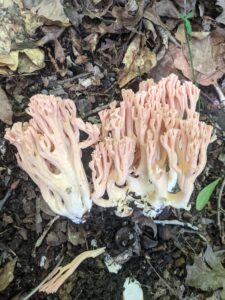Flora Fridays – May 24, 2024
go.ncsu.edu/readext?1005447
en Español / em Português
El inglés es el idioma de control de esta página. En la medida en que haya algún conflicto entre la traducción al inglés y la traducción, el inglés prevalece.
Al hacer clic en el enlace de traducción se activa un servicio de traducción gratuito para convertir la página al español. Al igual que con cualquier traducción por Internet, la conversión no es sensible al contexto y puede que no traduzca el texto en su significado original. NC State Extension no garantiza la exactitud del texto traducido. Por favor, tenga en cuenta que algunas aplicaciones y/o servicios pueden no funcionar como se espera cuando se traducen.
Português
Inglês é o idioma de controle desta página. Na medida que haja algum conflito entre o texto original em Inglês e a tradução, o Inglês prevalece.
Ao clicar no link de tradução, um serviço gratuito de tradução será ativado para converter a página para o Português. Como em qualquer tradução pela internet, a conversão não é sensivel ao contexto e pode não ocorrer a tradução para o significado orginal. O serviço de Extensão da Carolina do Norte (NC State Extension) não garante a exatidão do texto traduzido. Por favor, observe que algumas funções ou serviços podem não funcionar como esperado após a tradução.
English
English is the controlling language of this page. To the extent there is any conflict between the English text and the translation, English controls.
Clicking on the translation link activates a free translation service to convert the page to Spanish. As with any Internet translation, the conversion is not context-sensitive and may not translate the text to its original meaning. NC State Extension does not guarantee the accuracy of the translated text. Please note that some applications and/or services may not function as expected when translated.
Collapse ▲Mushrooms
If you find mushrooms disturbing, here is your warning to not read on! If you find them intriguing like myself, let’s dive in. The study of fungi is called Mycology, and this branch of science is often housed in university botany departments. As recently as the 1970s mushrooms were actually classified as plants. There are possibly millions of species; many exist under the soil surface out of sight. Many species help support plant life through symbiotic relationships and enhance plant to plant communication. The mushrooms of culinary interest are just a fraction of species. With all the recent rain, many mushrooms have been “fruiting” and we have received many client calls curious of what types they are seeing. Today, I will show a few examples of recent requests and discuss various identification techniques.
Disclosure: Unknown mushrooms should never be consumed, including those presented today. It can be a deadly mistake. Instead, snap a picture or bring us a sample. Samples identified by our office can be confirmed for safe eating (or not!). Species cannot be confirmed by pictures but educated guesses are provided. If you need support identifying a specimen please email me photo(s) and or call our office at 910 576 6011, I’d be happy to assist!
Our first mushroom is the blusher, Aminata rubescens. This mushroom grows in association with tree roots, a symbiotic relationship. It is a gilled mushroom appearing white to gray, with pale flecks on the top of the cap. One characteristic that can be helpful in identifying mushrooms is how they stain or bruise. For instance, the blusher turns slowly red upon handling or bruising.
Our second species is a stunning beautiful clavaria, or yellow tipped coral, Ramaria formosa. Pictured below it appears salmon to white, which is characteristic of this species. It is found throughout North America. Not much is known about this mushroom, but it may form associations with trees. Notably it lacks gills seen in other mushrooms. This is another identification characteristic – some mushroom undersides have gills, others have pores, scales, are smooth, are spongy, or even have teeth like structures.
One great way to identify mushrooms at home is to do a spore print. These prints can even be artistic, as spore prints are often colorful and abstract. However, these colors and shapes often tell you about the specific mushroom. To do a spore print, remove the cap from a mushroom and place it gill side down on a dark sheet of paper. Set in a warm dry location for 48 hours. After this time, remove the cap and observe the result. See below for some examples. Spore colors can be any color, ranging from brown to bright pink.

Spore print on black construction paper
Our third species of the day is the smooth chanterelle, Cantharellus lateritius. Chanterelles look like they have gills, but these are actually characteristic false gills called rugae. There are many different chanterelle species and they are highly valued fresh and dried. Remember – never consume without properly identifying the species by calling our office.
Finally, not all mushrooms are identifiable by morphology and require laboratory testing. Mycology is a growing field and new species are identified constantly. The bright orange mushrooms below are part of the bitter bolete family, genus Tylopilus. The species is uncertain. All boletes lack gills, and many bruise a distinctive color when cut or bruised.

Unknown species of Tylopilus, a member of the bitter bolete family
We hope you have enjoyed this edition of Flora Fridays! I know I did. Please consider leaving feedback in the box below. At Extension, we are here to listen to and address your needs.
Check out past Flora Fridays.











